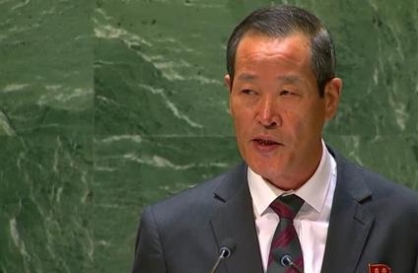
War refugee children stare at the camera with hungry eyes and muddy clothes in a photo taken in Seoul in 1950. Only 20 years later, though still captured in black and white, women are gaily walking down the shopping streets of Myeong-dong decked in hot pants and miniskirts.
South Korea’s dramatic changes from the 1930s up until the 1980s captured by late photographer Limb Eung-sik are on display at the National Museum of Contemporary Art, Deoksugung, in central Seoul.
Held in commemoration of the 100th anniversary of the photographer’s birth, the exhibition “Photography of Limb Eung Sik” reveals 200 photographs including 160 from the museum’s collection and around 40 from the Limb family that are being shown to the public for the first time. Some articles Limb left behind, including his cameras, letters and books, are also on display.

Limb was one of the nation’s first generation of photographers who brought change to the field of photography. The photographer, who was born in Busan but grew up in Japan, was at first largely influenced by pictorialism ― which puts emphasis on painting-like artistic photography ― until 1950. But he opened his eyes to the charm of photography as a form of record soon after the Korean War broke out, in which he participated as a war photographer.
Ever since he started focusing on capturing historical moments, it developed into a realism trend and took root as the main principle of photography in Korea. Many veteran photographers now well over 70 such as Joo Myung-duck, Hong Sun-tae and Wang Young-sang were Limb’s students in one way or another. Limb was the first-ever photographer to hold a show at NMOCA, in 1982.
“The exhibits not only show Limb’s life and career but also the process of development of Korean photography and even reflect the nation’s history,” said Lee Kyung-min, head of The Research Institute of Photographic Archives which is co-hosting the show with NMOCA.

The exhibition starts with Limb’s artistic photographs taken in the 1930s and 1940s produced under the Japanese colonial rule and continues on to the photographer’s well-known realistic photographs taken from the 1950s.
Limb Beom-taek, a photographer and Limb’s first son, said that he likes the photo “Job Hunting” the best among his father’s work. In the photo, a young man in a worn-out shirt and hat is looking down, wearing a sign that reads “Job Hunting” in Chinese characters.
“It chokes me up to see him wearing the signpost all alone in a street full of people. It must have been a very difficult photo to take,” the son told the press on Tuesday.
The “Myeong-dong” series introduced in the second and third sections of the exhibition is the highlight of the show.
After Limb photographed the war-ravaged area, he frequently visited Myeong-dong and took photos up until 2001, the year he died, when the place was bustling with tourists and shoppers. During the half-century, the skyline has changed, fashion has changed and even the expressions on the faces of passersby have changed.
“I cannot separate Myeong-dong from my life. I take and take and take photos (of the place) but still want to take more. I don’t know if a spirit of Myeong-dong has stuck to me or something,” Limb said in an interview with a local paper in 1980.
At the show, visitors can also peek into various series Limb had worked on since the 1960s including “Korea’s Old Architecture” series which shows photos of cultural properties like Muyrang-soojeon and Songkwangsa; the “Portraits of Artists” series in which visitors can find familiar faces like artist Chun Kyung-ja, actor and director Lee Hae-rang and conductor Ahn Ik-tae.
The exhibition runs through Feb. 21 at the National Museum of Contemporary Art, Deoksugung, in central Seoul. Tickets range from 2,000 won to 5,000 won. For more information, call (02) 2188-6114 or visit www.moca.go.kr.
By Park Min-young (claire@heraldcorp.com)
-
Articles by Korea Herald




![[Weekender] Korean psyche untangled: Musok](http://res.heraldm.com/phpwas/restmb_idxmake.php?idx=644&simg=/content/image/2024/05/02/20240502050841_0.jpg&u=)

![[Eye Interview] 'If you live to 100, you might as well be happy,' says 88-year-old bestselling essayist](http://res.heraldm.com/phpwas/restmb_idxmake.php?idx=644&simg=/content/image/2024/05/03/20240503050674_0.jpg&u=)











![[Herald Interview] Director of 'Goodbye Earth' aimed to ask how we would face apocalypse](http://res.heraldm.com/phpwas/restmb_idxmake.php?idx=652&simg=/content/image/2024/05/03/20240503050732_0.jpg&u=)
